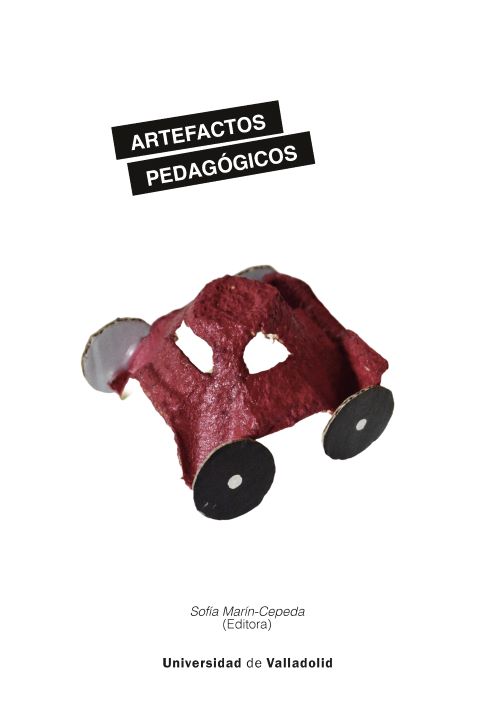Pedagogical artifacts
Keywords:
artistic education, arts, plastic and visual education, game, gamification, educational methodology, education, university education, primary education, artefact, pedagogic, school, learning, childhood, educational resource, educational project, didactics, university, museum, avant-garde artSynopsis
Artefactos Pedagógicos is an educational project designed for training in Artistic, Plastic and Visual Education in the Primary Education Degree at the University of Valladolid. During the 2023/2024 academic year, it was developed with 72 students in the 2nd year at the Faculty of Education and Social Work of Valladolid, in the compulsory subject "Fundamentals of Plastic and Visual Education". It is part of the framework of actions of the teaching innovation project "UvaMusEA, a university-museum collaboration project on art education", which began in the 2021/2022 academic year.
Play is a teaching-learning methodology that is close to children's natural learning. As Vygotsky argued, it is through play that the child sets thinking in motion. Through play, schoolchildren operate with separate meanings of objects through real action with the object. In play there are rules, structure, desires and affects. They are a reflection of the society and culture of the time. Based on these premises, and inspired by avant-garde toys, we develop in small groups artistic-pedagogical artefacts that function as didactic material around a theme of the curriculum.
The purpose of this publication is to publicise the work developed by the groups of students, as well as to inspire future didactic proposals related to artistic expression, pedagogy and play. We have had the collaboration of the students, who have developed the artefacts that are the protagonists of this publication, as well as the texts that develop them.
References
Aguirre, I. (2013). El papel de la educación en el acceso democrático a la cultura y las artes. Encuentros y desencuentros entre escuela y museo. Pensamiento, palabra y obra, 10, pp. 7-21.
Antoñanzas Mejía, F. (2005). Artistas y Juguetes (tesis doctoral). Universidad Complutense de Madrid.
Benjamin, W. (Edición 2015). Juguetes. Casimiro.
Coca Jiménez, P. (2021). Museos y escuela, una colaboración necesaria. Análisis de una experiencia de colaboración del profesorado en el Museo Patio Herreriano. En J. M. Cuenca, J. Estepa y M. Martín, Investigación y buenas prácticas en educación patrimonial entre la escuela y el museo: territorio, emociones y ciudadanía, pp. 449-461. Trea.
Espacio Fundación Telefónica (VV.AA., s.f.). Torres-García. Un moderno en la Arcadia. Cuaderno para profesores. Recuperado de https://espacio.fundaciontelefonica.com/wp-content/uploads/2016/06/Cuaderno-profesor-Torres-Garcia.pdf
Marín-Cepeda, S. (2021). La innovación docente en Educación Artística en la Universidad de Valladolid: un ejemplo basado en el vínculo. En J. A. Marín, J. C. de la Cruz, S. Pozo y G. Gómez (eds.), Investigación e Innovación educativa frente a los retos para el desarrollo sostenible, pp. 422-434. Dykinson.
Ortega Cubero, I. (2010). Los secretos del arsintes bajo el prisma de la teoría emergente de los datos. Arte, Individuo y sociedad, 22(2), 103-122.

Downloads
Published
Right Holder
Ediciones Universidad de Valladolid y autor(es)/autora(s) 2024License

This work is licensed under a Creative Commons Attribution-NonCommercial-NoDerivatives 4.0 International License.

